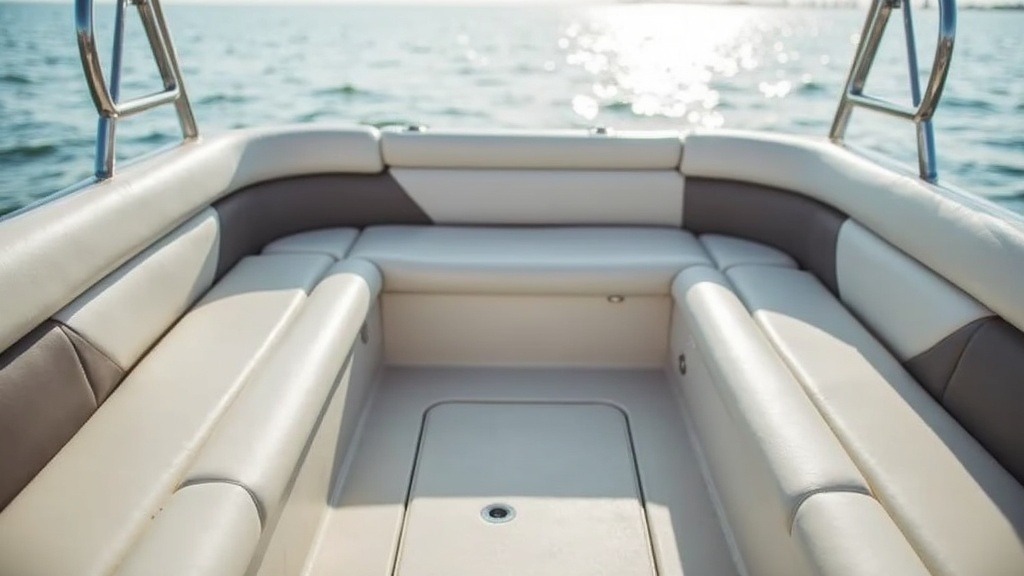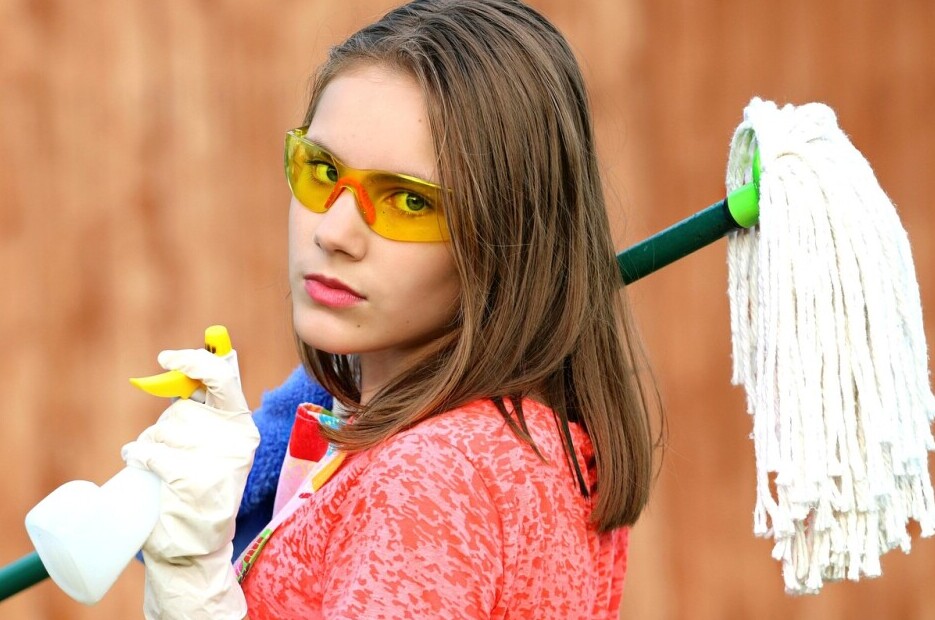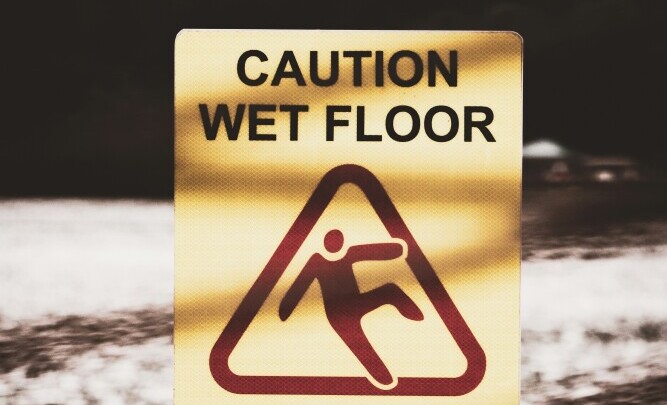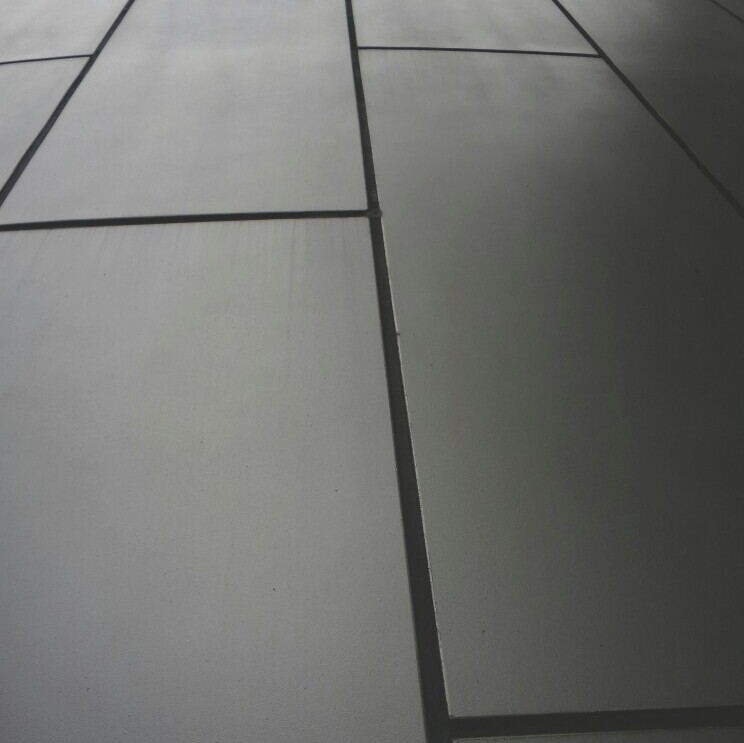Pontoon boats are all about good times on the water, but keeping them in nice shape doesn’t happen by accident. Seats and flooring take a lot of punishment. Sun, moisture, food spills, and fish grime can all take a toll. I’ve learned that a little know-how goes a long way when it comes to cleaning and protecting these important surfaces. Here’s how I tackle the job to keep my pontoon looking sharp and feeling fresh.

Why You Really Want to Care for Your Pontoon Seats & Flooring
Pontoon upholstery and flooring materials get put through a lot, especially if you’re out on the water often or have crew coming and going with wet swimsuits, fishing gear, and coolers. Neglect leads to faded seats, ugly stains, and even mildew. Definitely not what you want. Regular cleaning keeps these surfaces looking good, but protection is what really pays off, stopping major wear and making cleanup much easier next time.
Manufacturers use a mix of vinyl, marine carpet, composite, and newer woven materials for pontoon interiors. They’re designed for a marine environment, but even the toughest stuff can show wear if you don’t keep up. UV rays, heat, sunblock, food grease, and lake sludge all add up. Taking care of your boat genuinely saves money and keeps your hangout spot inviting season after season.
Cleaning Pontoon Seats: Step-by-Step
I make it a habit to keep pontoon seats clean—not just for looks, but because dirt and mold sneak in fast if I let things slide. Vinyl is the common covering for pontoon seats because it’s water resistant and durable, but it still needs some attention. Here’s my process:
- Quick Sweep: Brush off loose dirt, sand, and crumbs so you’re not grinding in debris as you clean.
- Mix a Gentle Cleaner: I mix a couple drops of mild dish soap in a bucket of warm water. Specialized marine vinyl cleaners are worth trying for serious dirt or older seats, but skip anything with bleach or harsh solvents. These can damage stitching and finish.
- Soft Scrub: Using a softbristle brush or microfiber cloth, I gently scrub each seat, paying special attention to seams and the underside where crud tends to collect.
- Rinse Thoroughly: I like to use a bucket or gentle hose spray to rinse off the cleaner. Leaving soapy residue can actually attract more grime.
- Dry Completely: I wipe seats with a dry towel and allow them to air dry. It’s super important to avoid trapping moisture, or mildew will have a field day.
For stubborn stains, like mildew spots or ink marks, I pick up a marinesafe cleaner designed for vinyl. If I’m ever in doubt, I test it first on a hidden spot. Magic Erasers can work, but they’re a last resort since they might wear down protective coatings if used too often. Sometimes, for extra tough spots, a little diluted white vinegar does the trick—just make sure to rinse thoroughly afterward. Regular attention helps stop stains from setting in at all.
Protecting and Conditioning Pontoon Seats
After cleaning, protecting the seats really makes the job last longer. Marinegrade vinyl protectants are the way to go. They put an extra barrier between your seats and sun, spilled drinks, or that one kid with muddy feet. Here’s what I stick to:
- Choose the Right Product: Find a protectant that specifically says “marine vinyl” or “UV protectant.” Automotive tire shines or furniture polish can make things slick or even break down vinyl over time, so I avoid those.
- Apply Evenly: I spray or wipe the protectant on, making sure to cover all surfaces and letting it sit for however long the instructions say.
- Buff Off Excess: Wipe gently with a dry microfiber cloth so seats aren’t greasy. This can actually attract dirt or cause slips!
Doing this three or four times a season keeps vinyl flexible and bright. If your boat sits uncovered in the sun often, monthly treatments are a smart call. Don’t forget the sides and backs of cushions, even if they’re less exposed—they can still take sun damage over time.
Cleaning Pontoon Flooring: Different Types, Different Rules
Pontoon floors get trashed fast. Dripdry swimsuits, spilled drinks, and sandy shoes all leave marks. The floor’s material determines how I clean it up. Here’s how I handle each common kind:
Marine Carpet
For traditional marine carpet, I start by vacuuming or sweeping up sand and grit. Then I use a mild carpet shampoo or a diluted allpurpose cleaner. I scrub with a soft brush, then rinse with buckets of clean water. Pulling up as much water as possible (with a wetdry vac, if you have one) helps things dry fast. Leaving the carpet soggy can lead to a nasty smell and sometimes even make mold show up. I also set up a fan or open hatches to speed up drying on humid days, especially after messy outings with kids or pets.
Vinyl, Composite, and Woven Flooring
Modern pontoons usually swap out carpet for “snap in” vinyl, woven, or even composite flooring. These are super tough and easy to clean:
- Sweep or vacuum off loose junk (leaves, sand, fish scales).
- Use a hose or even bucket water to spray off grime and salt.
- Scrub scuffs or sticky spots with a soft brush and mild soap. Never strong solvents, because these can fade or pit the surface.
- Rinse well. You want to avoid soap buildup, which can get slippery.
Pontoons with “faux teak” or composite planks look sharp but sometimes need extra care at seams. I check these for grime buildup, especially if the boat’s been in muddy water. Certain woven vinyl floors can catch crumbs and dirt between the weave; in those cases, spraying with a hose while brushing helps pull out hidden grit.
How to Protect Pontoon Flooring
Protection for flooring depends on the material. Marine carpet benefits most from being kept dry and out of the sun, so covers or shade help more than any spray on product. For vinyl, woven, or composite floors, you can add a UV protectant formulated for the specific surface. Usually a spray or light wipeon product works best.
- Products with UV blockers keep flooring from fading or cracking due to sun exposure.
- Avoid waxes or polishes not labeled for marine use. They can make floors dangerously slick.
- I always check product labels before using them. Flooring manufacturers usually list safe cleaners and protectants on their websites, which is pretty handy.
One simple trick: I use floormats around hightraffic spots or food prep areas. It’s not fancy, but it saves a lot of cleaning effort, especially if you’re out for long days with kids or pets. Replacement mats are cheap and keep the original flooring in nice shape for years.
Pontoon Maintenance & Protection: What I Always Keep In Mind
I’ve picked up a few habits over the years that help a lot with keeping pontoons looking good:
- Rinse Whenever Possible: A quick rinse after each outing keeps gunk from setting in and stops salt or lake water stains before they start. It also helps wash away sand and bits that might scratch surfaces.
- Dry before Covering: Make sure seats and floors are as dry as possible before putting on the boat cover. Trapped moisture leads straight to mildew and can make future cleanups a headache.
- Check Seams and Under Cushions: These places are mildew magnets. Lifting and airing out cushions after trips really helps. I sometimes store a couple moisture absorber packs under the seats for extra insurance.
- Patch Damage Fast: Small cuts or splits in seats and flooring get worse if ignored. I keep a vinyl repair kit on hand for boatside fixes, and have learned the hard way that small rips can grow quickly if not fixed early.
- Use the Right Covers: If your pontoon sits in the sun, breathable covers make a huge difference. I go for covers that let moisture escape but still keep UV off the seats and deck. There are even customfit covers that make setup a breeze, helping ensure every part stays protected, rain or shine.
Gear, Cleaners, and Tools I Find Super Useful
Having the right cleaners, brushes, and gear makes this job much easier. Here’s what I keep on board or in the garage:
- Softbristle scrub brushes (for both seats and deck, because hard bristles can scratch)
- Microfiber towels (for applying protectants and drying seats)
- Dedicated marine vinyl cleaner and protectant
- Bucket and hose with a spray nozzle
- Mild carpet shampoo (if carpet is still on your pontoon)
- Marineapproved UV protectant for floors
- Small vacuum for crumbs and dirt (handheld ones are extra handy on the dock)
I get the best results sticking to products made for marine materials; not household cleaners. It saves money and frustration longterm. I also keep gloves, a kneeling pad, and a few extra towels in my cleaning kit so the whole process goes faster. If you’re just getting set up, a bucket that fits under your seats or in a storage locker helps keep everything organized.
Frequently Asked Questions
Here are a few questions I get a lot from new pontoon owners or when friends ride along on my boat:
Question: How often should I clean my pontoon seats and flooring?
Answer: I’ve found quick cleanups after every outing stop big problems later. A deeper clean and protectant application two or three times a season keeps everything in top shape. If you fish a lot, eat messy meals, or entertain kids, you might want to spot clean more often. During busy summer weeks, I do a ten minute wipe down at the end of the day and it makes deep cleans so much quicker.
Question: Can I use bleach or harsh cleaners for mold?
Answer: It’s best to avoid bleach or cleaners with harsh chemicals on vinyl. They can weaken seams, remove protective coatings, and even void warranties. Marine mold removers or diluted white vinegar get the job done safer for tough spots. Always rinse thoroughly and dry well before covering again. Mold grows fast in hidden corners, so regular checks are a smart move.
Question: What’s best for protecting seats during winter storage?
Answer: I always clean and dry seats well, then use a breathable cover or shrinkwrap if my boat is outside. Some folks like to apply a fresh protectant before storage to handle dry winter air. If you store your pontoon in a damp climate, desiccant canisters help avoid musty smells. Come spring, I give everything another quick check for new stains or mildew and clean up right away if needed.
How a Clean, Protected Pontoon Pays Off
Treating pontoon seats and flooring right means more time having fun and less frustration battling mildew or faded vinyl. Routine cleaning keeps your boat looking better, makes it more comfortable for everyone, and can even add value if you ever want to sell or trade up. I’ve found that these habits are easy to start and pay off with every trip out on the lake or river. My friends always comment on how new my boat looks, and it’s thanks to staying on top of the simple stuff.
Enjoy the ride, and give your pontoon a little extra TLC. The difference shows every time you hit the water.
